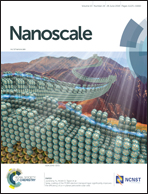Rational design of an anchoring peptide for high-efficiency and quantitative modification of peptides and DNA strands on gold nanoparticles†
Abstract
The pentapeptide Cys-Ala-Leu-Asn-Asn (CALNN) could stabilize gold nanoparticles (AuNPs), most of which serve as anchoring blocks for various bioanalyses by introducing recognition blocks. However, the typical conjugation strategy greatly suffers from excessive use of peptides, overnight incubation and consequently low efficiency. In this study, new design criteria for the efficacious anchor were established. In addition, a stable, instantaneous and effective modification of the anchoring peptide RRFPDD or its derivatives on AuNPs is first proposed for the first time. With low consumption of peptides (50 μM), the loading process could be realized in 100 seconds. The anchor RRFPDD also allowed for the quantitative adsorption of appended recognition blocks (e.g., peptides or DNAs), thus adjusting their proportions for better performance. In particular, the biological characteristics of those recognition blocks were fully retained. Furthermore, the anchor RRFPDD contributed to a time-saving and high-efficiency (85%) hydrolysis of peptide-capped AuNPs. Considering these advantages of the new anchor, a reliable assay for cardiac troponin I (cTnI) was developed with a detection limit as low as 0.45 ng mL−1, and also successfully applied in human serum samples.



 Please wait while we load your content...
Please wait while we load your content...